Get full access
To view the full article and get unlimited access to InsuranceAsia News's exclusive insight across 5,000+ articles
Already a Subscriber? Please Login
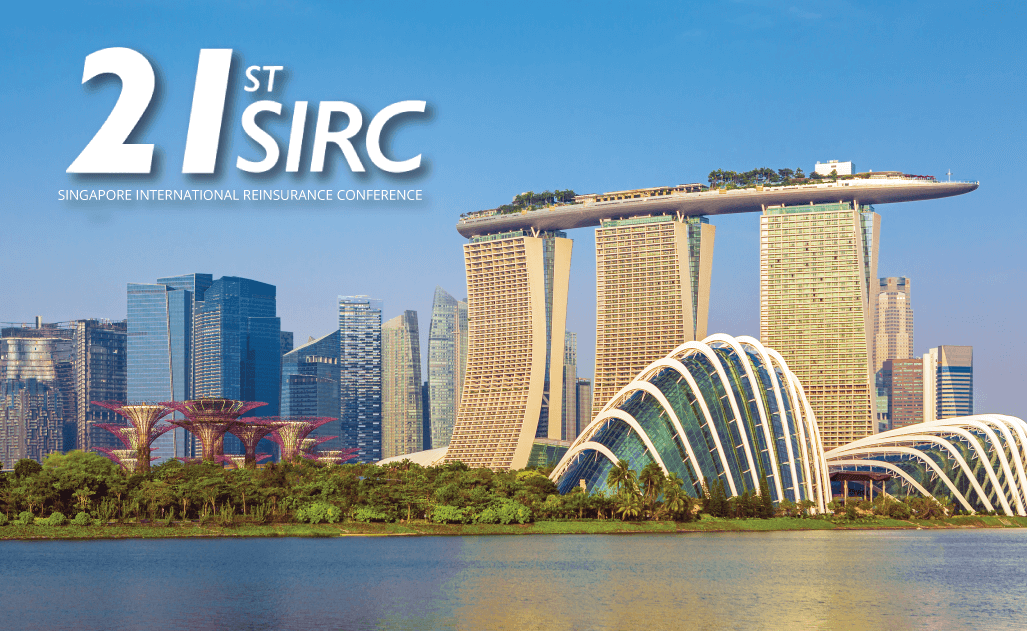 Didn’t he do well?
Didn’t he do well?
I’m referring to the recently installed Lloyd’s CEO Patrick Tiernan, who gave the opening guest speaker address at this year’s conference. [Full disclosure at this point : I am half-Irish, so there may well be an element of bias here, but actually, if you read on, I don’t think this matters.]
This was Tiernan’s first address in the robes of his office, so to speak, to the Asia market. And boy, was he impressive! From the moment he walked on stage to the moment he left, there was a real buzz in the room, as he sought to impress on his audience the widespread capabilities and in-depth global expertise of Lloyd’s in an increasingly complex global risk environment.
More importantly, his excitement as regards both the economic growth potential for the diverse Asian market, and his enthusiasm for the risk partnerships that lie ahead for the region and Lloyd’s as it seeks to embark on substantive expansion, were tangible. More of this, please!
Not that Tiernan had everything right. Or at least it would be fairer to say that some of his presentation is now open to question!
As part of a series of informative interactive quizzes with the audience, Tiernan was so keen to highlight Lloyd’s history as an innovator (think first motor insurance policy and first aviation insurance policy, for example), he also claimed that Lloyd’s developed the first cyber policy.
Yet the tall chap to the left of me in the audience, who was until very recently CEO of the International Underwriting Association (of which Tiernan was for a brief period also chairman), was not so sure, suggesting that this now widespread cover was first developed in North America.
Answers on a postcard, please – I’ve no doubt that some of you risk eggheads out there can set the record straight.
O yes, I’d almost forgotten. Hats off to Kenrick Law, chairman of the organisers of SIRC, the Singapore Reinsurers’ Association, for his own address to delegates in which he made use of state-of-the-art AI glasses to help deliver his speech.
Thank goodness Law still had his address printed out, however, as at times the technology faltered. As Monetary Authority of Singapore managing director Chia Der Jiun, who took the stage after him quipped: “It’s good to see guardrails and contingency plans in place- your regulator would be proud!”

Clients are asking for some moderation in terms and conditions and breaks and Swiss Re are ready to look at it based on the performance and external factors, according to Victor Kuk, head of client markets for P&C reinsurance business in Southeast Asia, India, Korea, Hong Kong and Taiwan (SID).
“Overall, I expect there will be some moderation in property depending on different factors. The moderation will come in the form of pricing and structures,” said Kuk.
Kuk said that the clients will look at their structures and decide whether it is fit for purpose.
“When I say fit for purpose, it means look at volatility, capital positions, solvency, as well as profit generation,” he said.
“Because things have stabilised a bit more for two years now, we will need to look at the structures that had become very tight during the hard market.
“We will look at the individual clients and then we will decide whether use of loss participation corridors or different structures or features that were put in will continue.”
He said that there is new reinsurance capacity coming into the Asian market, which will be a factor in terms of the eventual pricing.
“But ultimately, we look at how sustainable the primary market is. We look at how we deploy capacity and whether we’re getting sufficient margins,” Kuk added.
“In some of the markets, you can charge a bit more or you have strong conditions. But we are more interested in whether they’re charging enough for the primary risk. In a number of primary markets, we see some softening. We monitor them.”
For the global reinsurer, the factors that will determine the eventual outcomes include growing nat cat losses, which impact programs; sustainability, which is to do with a number of external factors including economic growth, trade tensions, etc., and how the individual clients manage underwriting.
Swiss Re is bottomline-focused, he said: “We don’t have a premium target. It’s not how we manage the business. We don’t measure the performance based on premium but based on underwriting performance.

“Casualty, we believe, will be relatively sticky. Casualty in general is growing in most of the markets, but it’s still a small line of business compared to property. The other one will drive the growth is medical, but then it’s not part of the P&C world.”
Victor Kuk, Swiss Re
“We recognise there’s a cycle. Our philosophy is dependent on the cycle we are in.
“In the hard cycle, we will deploy more capacity and grow more and in a softening world, we will hold back a little bit.”
Swiss Re will look at offering protection in the lower layers, but that would depend on the motivations of the clients.
It will look at programs in the “totality in terms of why they want to buy the program”, according to Kuk.
“Depending on the kind of business you talk about or volatility, capital management, solvency management, all those will be there as well, but the structure would be catered for what they need the programs for,” he added.
However, aggregate covers is not something Swiss Re will do.
“Ours is a shock-absorbing role. Going into the working layer is not the objective of reinsurance.”
“India, Southeast Asia, we expect the growth to be higher, which means then the premium should go up,” Kuk said.
In terms of lines of business, nat cats will continue to drive the need for property cat. Kuk identified cyber and specialty lines as opportunities for growth in the region.
“Cyber is a small line of business, but in terms of growth will be quite significant in the next few years,” he said.
“If you look at specialty lines, engineering in countries where there’s still a large infrastructure budget that will continue to drive the growth there.”
In other specialty lines, marine, which remains a function of global trade, is another class that Kuk highlighted.
“So, marine class’ performance will depend on how the trade tensions are eventually sorted out. But in general, the marine market has improved this year,” he said.
“Casualty, we believe, will be relatively sticky. Casualty in general is growing in most of the markets, but it’s still a small line of business compared to property. The other one will drive the growth is medical, but then it’s not part of the P&C world.”
Kuk noted that given the regulatory changes and the “fragmentation” in many of the region’s markets would drive consolidation in the region.
And Swiss Re sees opportunities in advising clients on their transactions.
“M&A-related structured solutions is one of our core focuses,” he said.
“We see that as attractive for us because we are well placed to close the deal in the sense that we have a lot of experience in the Asia market to manage things like loss portfolio transfer, adverse development cover, runoff, legal finality, economic finality-type deals.”
 Amid continuing challenging soft market conditions, (re)insurers in the London company market are increasingly looking to source business from Singapore, according to Chris Jones, CEO of the International Underwriting Association.
Amid continuing challenging soft market conditions, (re)insurers in the London company market are increasingly looking to source business from Singapore, according to Chris Jones, CEO of the International Underwriting Association.
Speaking to InsuranceAsia News on the eve of the 21st Singapore International Reinsurance Conference, Jones pointed to growth as the underlying motive.
“London is getting more involved in the Singapore market in what they might regard as traditional Singapore market business than previously, particularly around property risk,” he said.
“My working assumption is that is simply a result of market conditions and needing to look for growth where you can find it.”
Property insurance remains a major segment in a mature market such as Singapore, where it accounts for more than 30% of total premium.
However, its recent performance has struggled.
According to Gallagher Re’s APAC market report, for example, last year the property insurance segment in Singapore recorded a 53.2% increase in net incurred claims, resulting in a SG$3.83 million (US$3 million) dip in underwriting performance to post an overall profit of S$41.72 million.
“There is a talent gap. There are not enough people coming into the industry and people are staying in the industry a lot longer. If you look at the demographics now, under 39 seems to the trigger for anyone who’s young.” Chris Jones, IUA

This was largely attributed to several significant property losses recorded in 2024.
While the number of residential fires remained stable, fires of electrical origin rose by 8.3%, and incidents involving active mobility devices (AMDs) surged by 25.7%.
Looking more widely, Jones said he had recently returned from Singapore, where he had a number of fruitful discussions with senior market practitioners.
He added that there was a general agreement that Asia still has a protection gap in terms of insurance uptake compared to other regional markets, but it is area where the London market can help.
“There are areas where reinsurance can assist there, as well as the experience of other markets,” he said, adding that the London market is helping to develop new solutions which will help to bridge the protection gap, including the development of parametric type covers which provide real-time responses to insureds.
Jones also said it was his broad understanding was that recruitment is as much of an issue for the Singaporean (re)insurance market as it is for the London market.
“There is a talent gap. There are not enough people coming into the industry and people are staying in the industry a lot longer. If you look at the demographics now, under 39 seems to the trigger for anyone who’s young,” he added.
“A lot of companies and ourselves are putting measures in place to showcase the industry. I think once people are in the industry a lot of people stay, but in terms of recruitment there is still a lot of work to be done.”
Looking forward, Jones was bullish about the prospects for collaboration between London and Singapore.
“In London we need to be complementary to Singapore, and major on our ability to write those really large, sophisticated placements. It’s about working with our like-minded colleagues in other jurisdictions,” he said.
 Advancements in risk-based capital frameworks in the region is leading to increased levels of discussion around the sources and uses of capital, including reinsurance, from both tactical and strategic perspectives, according to Justin Ward, head of capital advisory, Asia Pacific, for Guy Carpenter.
Advancements in risk-based capital frameworks in the region is leading to increased levels of discussion around the sources and uses of capital, including reinsurance, from both tactical and strategic perspectives, according to Justin Ward, head of capital advisory, Asia Pacific, for Guy Carpenter.
As a “source of capital”, reinsurance’s strong loss absorption components serve a key role for insurers.
As insurers improve their understanding of the risks they are carrying and capital productivity, “we are seeing discussions ranging from structured reinsurance, alternative sources of reinsurance capital right through to alternative value chain combinations”, Ward said.
“Across various jurisdictions, we have observed several distinct solutions emerging, including retrospective reinsurance, which acts like a ‘pseudo’ equity injection by releasing the capital associated with claims liabilities from the balance sheet,” he said.
“Growing interest and appetite in managing P&L volatility and valuation through solutions on the net retained position. This ultimately influences the ability of management to access other sources of capital on competitive terms.”
He also pointed to increased interest from private market investors seeking exposure to insurance risk, particularly risks with longer durations, which has resulted in a significant rise in sidecar-like facilities.
“At the same time, we continue to work with carriers to develop strategic reinsurance solutions that extend risk transfer and foster relationships enabling growth, capital and volatility management,” he added.
With K-ICS in Korea, RBC2 in Malaysia, new minimum capital requirements in Indonesia, and the Monetary Authority of Singapore’s consultation on the catastrophe risk charge under their risk-based capital framework, there are several regulatory reforms on the cards across Asia Pacific.
The risk-based capital framework in Hong Kong, which was adopted a year ago, has shown little demonstrable impact on consumer outcomes such as affordability and availability.
However, “has provided greater insight into balance sheet risks for many stakeholders, including regulators, rating agencies, and shareholders,” Ward noted.

“It is critical to meet these requirements while ensuring that insurers can drive commercial decision-making and outcomes from their compliance efforts.”
Justin Ward, Guy Carpenter
“Insurers are becoming increasingly aware of the risks they are carrying, the interaction between these risks, including their interlinkages during periods of significant stress, and the controls used to manage them,” he added.
Meanwhile, insurers are increasingly building capabilities related to capital productivity by measuring capital consumption by risk and lines of business and explicitly allocating capital accordingly while considering the “Three R’s” – regulatory, ratings and risk-based capital.
“Finally, insurers are focusing on different sources of capital such as equity, debt or reinsurance capital, along with understanding the loss absorption characteristics of these sources,” according to Ward.
In the face of this rapid regulatory transition, best practice encompasses understanding the problem, identifying stakeholder requirements, learning from others facing similar problems, and drawing insights from other jurisdictions.
This is incredibly important in the Asian context, given the nature of change across multiple jurisdictions.
“We always advocate for compliance that achieves commercial outcome, not just meeting the minimum requirements.
“It is critical to meet these requirements while ensuring that insurers can drive commercial decision-making and outcomes from their compliance efforts,” he added.
Expanding on how these regimes and regulatory reforms are impacting companies’ product strategies and expansion plans in the region, Ward said that, as with the introduction of any changes to prudential arrangements, signalling from the regulator to industry participants occurs.
“We don’t view it as a wholesale change related to product offerings or launches.
“What we see is a greater focus on ‘return’ metrics by product, and in some cases by product and channel, resulting in changes in product design, pricing and sometimes a reduction in appetite for certain lines of business.”
 The Emerging Asian middle class is optimistic about their local economies and their future financial prospects, but it also sees some of the widest protection gaps globally.
The Emerging Asian middle class is optimistic about their local economies and their future financial prospects, but it also sees some of the widest protection gaps globally.
China, India and Indonesia face significant health and mortality protection shortfalls given large populations and rapid economic growth, while natural catastrophe protection gaps for the region are estimated at over 90%, among the highest globally.
“The protection gaps are also widening,” according to Jasmine Miow, head of South Asia and Southeast Asia markets at Peak Re.
“Changing lifestyles, ageing populations, climate change, medical inflation and a rise in emerging threats like digital and cyber risks are altering the risk landscape and introducing new vulnerabilities.
“Closing the protection gaps in Emerging Asia represents a vital opportunity not only for insurers, but also for governments, policymakers, and society at large in order to enhance financial security and build resilient communities prepared for the challenges of the future.”
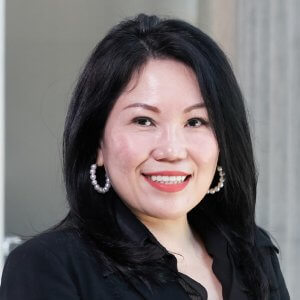
“Despite being aware of risks, many middle-class consumers feel that insurance is either unaffordable, unnecessary, or too complex, leaving them vulnerable to financial shocks.”
Jasmine Miow, Peak Re
A Peak Re survey of 8,000 middle-class consumers across seven emerging markets finds a significant mismatch between the middle- class consumers’ perception about their protection gaps, versus industry estimates.
On average, consumers perceive smaller protection gaps than those estimated by the insurance industry.
“Health and mortality gaps are better understood by consumers, though still underestimated,” Miow said.
“Despite being aware of risks, many middle-class consumers feel that insurance is either unaffordable, unnecessary, or too complex, leaving them vulnerable to financial shocks.”
The mismatch reflects gaps in consumers’ risk awareness, or in the understanding of the need for protection and/or of the adequacy and scope of their existing coverage.
“In the Philippines, standard policies often exclude floods and earthquakes, while those in Malaysia exclude specific perils like earthquakes, requiring expensive add-ons,” according to Miow.
Optimism about economic future affects the perception of protection gaps. India and Vietnam, where individuals are the most optimistic about their financial future, reported the smallest perceived protection gaps.
“In India, two emerging risks are climate change and cyber risks,” said Sudhir Salian, head of India and Middle East markets.
“India ranks sixth in the global climate risk index for climate vulnerability, and with the advanced development of the Unified Payment Interface based financial ecosystem, high digital penetration and the pervasiveness of digital transactions exposes the market to unprecedented cyber risks.”
“The perceptions of low protection gaps indicate the immense potential for insurance from engaging with consumers through targeted education and understanding their unique risk protection needs.” Sudhir Salian, Peak Re
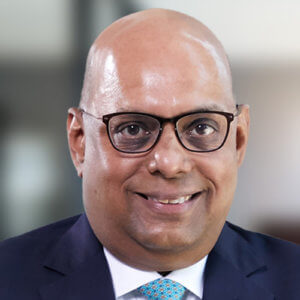
The survey showed that 43% of middle-class consumers expect climate change to significantly impact their life over the next three years.
It has shifted from a distant environmental issue to an immediate and personal economic threat for many.
Miow noted: “The saying, ‘we escaped poverty, only to be chased by the rising tide’, captures the profound existential anxiety of Vietnam’s middle class, framing climate change as a direct threat to their hard-won socioeconomic progress.”
Floods and heatwaves are the top extreme weather concerns in the region, but significant regional variability is seen, where consumers in the Philippines are the most concerned about typhoons, and droughts rank high in Vietnam.
“It is seen as a force that could reverse decades of national and personal economic progress,” according to Miow.
Encouragingly, insurance remains the primary tool for consumers looking to close these protection gaps, according to the survey.
This is especially the case in Indonesia and India, where the willingness to purchase insurance is the highest.
Salian said: “The perceptions of low protection gaps indicate the immense potential for insurance from engaging with consumers through targeted education and understanding their unique risk protection needs.”

Soon Keen (SK) Lee, CEO for Asia Pacific and MENA, says diversification is a focus for the firm in Asia.
Despite overall adjustments to programs as the soft market continues to bite, there will nonetheless be territories that buck the wider trend at the upcoming 1.1 renewals, according to Soon Keen (SK) Lee, CEO for Asia Pacific and MENA at Canopius.
Speaking to InsuranceAsia News during the 21st Singapore International Reinsurance Conference, Lee said that most markets are seeing an adjustment of terms and conditions, but cautioned against adopting a blanket approach, as there are certain markets such as Taiwan – coming as it does off the back of a severe earthquake loss in 2024 – which are continuing to see pricing reflect a challenging natural catastrophe and will likely exhibit a different renewals dynamic.
In line with the general underwriting sentiment at SIRC, Lee also stressed that forthcoming renewals need to be put in context,
“We are still very sensible in terms of how we deploy our capacity,” she said, adding that even any adjustments to programs will be coming off attachment points which had increased by at least 50 to 100% in recent years, “so I would think that terms and coverage and attachment points are still pretty healthy and most clients are still taking good retentions on each of their treatment”.
Since coming on board last year, Lee has expanded the carrier’s product offering in order to provide “a more comprehensive solution” for clients, including the hire of Rob Barnum from QBE as head of financial lines for the Asia-Pacific region. The strategy appears to be paying dividends, with Canopius’ Australia financial lines practice having grown to close to A$10 million (US$6.5 million) in GWP to date, Lee said.
“In Asia, we are trying to diversify as much as we can. We don't want to over-aggregate ourselves in one particular country.” Soon Keen Lee, Canopius

“In Asia, we are trying to diversify as much as we can,” Lee said. “We don’t want to over-aggregate ourselves in one particular country.”
She added that Asia is a crucial part of the group portfolio, and is complimentary to what Canopius is doing out of London and Bermuda, and that having a local presence enables a closer relationship with clients.
Andrew Ziolkowski, head of Australia, spelled out the carrier’s ambitions for the country.
“For Canopius in Australia, New Zealand, the team have really established a very credible and confident presence in six years. It’s actually remarkable how much they have achieved,” he said, before noting that there are still areas where it eyes a greater degree of penetration – especially the Australian mid-market,” he said.
“There’s a lot of opportunity in certain segments of that market.”
The thorny issue of the lagging take-up of cover was also raised by Lee.
“If you’re looking at the projection gap, then yes it’s a challenge currently for the whole of the Asian market,” she said. “But it also is opportunity for us.”
Nonetheless, she added, “We won’t be able to solve this problem by ourselves – this is an industry challenge. How as an industry are we going to able to reduce the gap? We won’t be able to close the gap for certain, but we’re going to reduce that gap over the next few years. I think that is a hot topic for everyone.”
Jesse DeCouto, Canopius’ Bemurda-based CUO, was keen to stress that the wider market continues to operate in a period of continuing global uncertainty and in some cases instability, and of course that beings with it some challenges.
However, he also noted that such an environment also presents considerable opportunities for underwriters who are able to respond to the changing situation, agreeing with the assessment of Lloyd’s CEO Patrick Tiernan in his opening address to the conference that lines such as political violence and contingent business interruption can come into their own.
 After several years of hard market conditions, the APAC reinsurance market has turned a corner. We head into the 2026 renewal with ample capacity and good appetite from reinsurers. But this offers cedents more than just an opportunity for cost relief – it also widens the scope for innovative and tailored reinsurance programs.
After several years of hard market conditions, the APAC reinsurance market has turned a corner. We head into the 2026 renewal with ample capacity and good appetite from reinsurers. But this offers cedents more than just an opportunity for cost relief – it also widens the scope for innovative and tailored reinsurance programs.
For many years now, insurers in the APAC region have been taking advantage of sophisticated reinsurance structures that can smooth out volatility over several years, or help support solvency. But as the cycle moves on, it is a good moment for insurers to take stock of their strategy and consider other solutions that may add value.
In this article, Gallagher Re’s head of strategic solutions for APAC, Roshan Perera, and global practice leader for customised solutions, James Mounty, give an overview of the volatility and capital management challenges currently faced by clients in the region – and offer some ideas for how to meet them
James Mounty (pictured, below): One of the key challenges is managing the net (or retained) volatility associated with natural catastrophes – in both property and motor, which are significant business lines across the region.
For those exposures, the level of retention on excess of loss (XoL) reinsurance programs is probably higher than clients would like. So they are looking for reasonably priced mechanisms to buy out the volatility, because it supports their earnings. Organisations that manage volatility well tend to be recognized and rewarded by owners and/or the investor community.
Roshan Perera (pictured, right): Insurers’ minimum capital requirements are increasing in some markets, for example Indonesia. This can drive consolidation and M&A activity, as has already happened in the Philippines. Structured reinsurance transactions, such as loss portfolio transfers (LPTs), can help support such deals – for example, in situations where a buyer is interested in acquiring an insurer, but wants to divest a particular line of business.
RP: In our APAC market report, we talk about the five forces shaping insurance business in the region – and one of them is the harmonisation of regulation. There are only two markets that are still on a pre-RBC framework – Vietnam and India – and they are both looking to introduce an RBC framework over the next three years.
While insurers in both markets already make good use of structured solutions, we are anticipating that there will be growing interest in capital-supporting reinsurance structures, and potentially retrospective deals to remove unwanted liabilities.
JM: The implementation of a structured solution is often about customising a traditional reinsurance product so that it achieves a targeted outcome in the most cost-effective manner. Our first step will be to understand what the client wants to achieve.
When the outcome required is capital relief, often the solution is a structured quota share.
These are a really great way for insurers to finance expansion without overextending their capital base – or ceding too much margin to reinsurers.
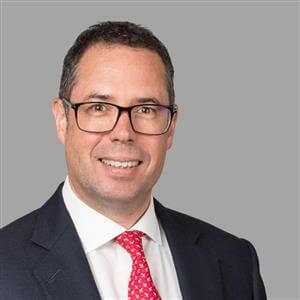
Under a surplus relief quota share or SRQS arrangement, the ceding commission rate can slide up or down depending upon the loss ratio performance. This rewards the ceding company if results are better than the provisional loss ratio plan, but it will also protect the reinsurer if the outcome is worse than plan.
Where clients are looking to control net volatility, we often use the multi-year XoL structure. These have been very popular across the APAC region for many years, as a way of managing the frequency risk at the bottom end of programs.
If the insurer avoids a negative outcome in year one, it can bank the profits via an early commutation and renegotiate the deal. If the loss experience is less favorable, then they have the security of knowing that cost and capacity are locked in for a further two years.
There are also good opportunities to explore aggregate XoL covers in the current market, and structured aggregate XoL is no exception. Since structured solutions can often attach lower, you might create a mix-and-match approach – a structured solution attaching closer to the expected loss, with conventional aggregate protections attaching higher up the probability distribution. Ultimately, we are looking to support our clients to achieve their financial objectives in the most efficient manner possible. Regardless of where we are in the market cycle, we think there are always reasons to consider some degree of customisation.
RP: Take increasing capital requirements as an example. Recently, we helped one client in Indonesia that was quite close to the statutory minimum for the dynamic solvency requirement. We put in an arrangement called a financial-year quota share (FYQS) to help address that. These types of structures combine prospective and retrospective cover, giving immediate and significant capital relief for the duration of the financial year.

Another recent deal in Malaysia was for a client who had grown their motor insurance business quite rapidly, to the point where they could not meet the capital requirements to fund that growth. So they did an LPT deal to help free up those funds so they could continue to grow.
JM:Over the past year, we have seen a significant increase in the number of reinsurers telling us they are interested in writing structured business – and we do think this will lead to some modest pressure on margins. Coming into this renewal, there are at least five large new reinsurers for us to talk to, and perhaps as many as 10.
RP: I have also had several conversations with new markets who are establishing themselves in APAC and have told us they are keen to do structured deals. We are aware of several global reinsurers active in the region that are making hires and have plans to enter this market, as well as regional Asian reinsurers that have been ready to engage on structured programs.
RP: Within the APAC region, we have a seven-strong strategic solutions team with capabilities that range from actuarial to financial analysis. We have very recently recruited a new point-person for structured solutions specifically, who will be reporting to me, dedicated to building out this portfolio and supporting our clients in this area. The Structured Solutions Asia team works hand in hand with local client teams in each market, and can call upon the broader analytics capabilities we have across the region. Increasingly, what we’re finding is that in every RFP we respond to in the region, for clients big and small, there will be a structured solution that features in there.
JM: And of course, the APAC team can call upon the resource of our global customised solutions practice, which comprises 40 people in various centers of excellence all around the world. What distinguishes our approach in APAC is that every client will be consulted on whether a structured solutions approach works for them. That has allowed us to build up a really market-leading position for this kind of solution in the Asia-Pacific region.
 Satellite disaster management specialist ICEYE is looking to expand its offerings to the wider Asia Pacific as its Japanese business continues to mature, said Kohei Watanabe, strategic account manager, APAC.
Satellite disaster management specialist ICEYE is looking to expand its offerings to the wider Asia Pacific as its Japanese business continues to mature, said Kohei Watanabe, strategic account manager, APAC.
“Japan was ICEYE’s first market in the APAC region for nat cat monitoring and flood solutions, due to our strategic partnership with Tokio Marine,” he said.
“Japan’s exposure to floods, typhoons, earthquakes, and tsunamis amplifies the importance of ICEYE’s capabilities. We’ve now matured our solutions for these perils and are expanding them across Asia.”
ICEYE’s flood solution in Japan is fully operational, while its earthquake product, developed in collaboration with local partners and piloted, will be launched in the country in 2026, according to Watanabe.
Besides, the company’s typhoon monitoring solution is active, and wildfire is being considered an additional peril.
“Our multi-peril capability is now almost complete, and Japan serves as a foundation for our broader APAC strategy,” he said.
ICEYE launched its Japan business in 2024 and will be opening a local office in the near future, Watanabe added
Moreover, besides supporting real-time claims response and helping insurers pay claims faster, ICEYE Japan is now expanding into areas like underwriting, exposure management, and improved flood modelling for internal and external reporting.
“Beyond Japan, we’ve operationalised flood monitoring in Taiwan, Thailand, and India and continue to expand across Asia.
“Our approach is methodical, and we choose countries based on data quality, market readiness, and the potential for high-impact use cases,” according to Watanabe.
ICEYE owns and operates the world’s largest synthetic aperture radar (SAR) satellite constellation, delivering objective, near real-time insights, day or night, for critical perils such as flood, typhoon, and wildfire, said Watanabe.
The data that ICEYE delivers is at a speed and granularity that never existed before, creating a brand-new layer of information that insurers can use to enhance actuarial peril modelling, he added.
“Our insights are particularly useful in addressing secondary perils like floods and wildfires, where models can be coarse and outdated due to climate change and land use changes, e.g., urbanisation and deforestation,” said Watanabe.
“Since 2021, we’ve analysed close to 400 catastrophe events globally. This gives us a growing historical archive of observed loss data that can enhance or validate model-based analysis.”
He added that historical data can be sparse or unreliable, especially in developing regions, where data from data-rich countries, like the US or parts of Europe, has often been extrapolated.
“We are also producing entirely new datasets for APAC. This not only means that insurers can effectively backfill historical catalogues, but this depth of insight can also help improve technical pricing and transform claims operations.” Kohei Watanabe, ICEYE

“ICEYE’s global capability allows us to generate accurate, location-specific data for underserved regions, enabling solutions and response strategies to be developed based on actual historical data.”
Another unique capability of ICEYE is its ability to proactively task satellites to take targeted images before and after an event, particularly for perils like typhoons, wildfires, and earthquakes, allowing for better understand of the extent of building damage and conduct real-time hazard analytics that were previously unavailable.
“We’ve also built a dedicated team of experts, including meteorologists, insurance specialists, and geospatial and catastrophe experts, who support the analysis of this data in real time and provide actionable insights for the insurance industry,” he added.
With labour shortages in areas like loss adjusting and disaster response worsening, ICEYE data reduces the need for boots-on-the-ground loss adjusters in inaccessible or high-volume events, Watanabe said.
“We are also producing entirely new datasets for APAC. This not only means that insurers can effectively backfill historical catalogues, but this depth of insight can also help improve technical pricing and transform claims operations. ”
“Further, our change detection capabilities enable a shift from hazard-based pricing to damage-based validation, which applies to both parametric and indemnity products. So, there are many opportunities for ICEYE to support ongoing advances in the insurance sector.”
 Demand for bespoke solutions and interest in parametric structures that deliver faster recovery and greater flexibility are growing, according to Kevin Bogardus, chief executive, Everest Re, Singapore.
Demand for bespoke solutions and interest in parametric structures that deliver faster recovery and greater flexibility are growing, according to Kevin Bogardus, chief executive, Everest Re, Singapore.
Over the past few years, Everest has expanded its presence, diversified its offerings, and deepened relationships across Asia Pacific (APAC), positioning us to partner with our clients and brokers across a myriad of global specialty lines such as parametric, surety, cyber, engineering, and renewable energy, while maintaining disciplined growth and selective deployment of capacity in traditional property and casualty lines. Moreover, Everest Re in Asia has positioned itself as a credible lead quoting market across various lines of business, including specialty.
Our recently launched GIFT City office enhances our local engagement and supports expansion across property, casualty, and specialty lines, reinforcing Everest’s global strength with local precision whilst demonstrating our commitment to long-term investment in key growth markets. This aligns with the broader trend across Asia Pacific, where clients are increasingly seeking bespoke and innovative solutions.

Our appetite continues to broaden thoughtfully across lines, supported by continued capacity, robust analytics, and a long-term partnership approach.
As local economies throughout the region continue to develop and diversify, demand for specialised risk transfer solutions is rising rapidly, and Everest is well-positioned to respond. We remain consistent through cycles, deliberate in our growth, and built for the long term.
Renewals are expected to be measured, disciplined, and partnership–driven. Capacity demand remains strong, especially in some specialty lines. Recent natural catastrophe activity, including the typhoons and floods in southern China and Southeast Asia, as well as earthquakes in the Philippines, have reinforced the importance of sustained underwriting discipline and risk awareness. Retention levels remain reasonable, but there is growing demand for bespoke solutions and increased interest in parametric structures that deliver faster recovery and greater flexibility.
Opportunities exist for reinsurers that can take a broad and holistic approach, including meeting the growing demand for specialised risk transfer and analytics-driven solutions. Meanwhile, there is heightened focus on natural catastrophe volatility and emerging risks such as cyber and climate change.
Everest’s local presence, technical expertise, product agility, and long-term perspective position us well to help clients navigate this evolving landscape. Our ability to ‘find the yes’ and deliver innovative yet disciplined solutions remains a key differentiator.
Engage early with us, share robust data, and stay open to innovative and broad-based structures. Clear communication and transparency throughout the process are key. By collaborating proactively, we can ensure that cedents secure the best outcomes and strengthen our long-term partnerships.
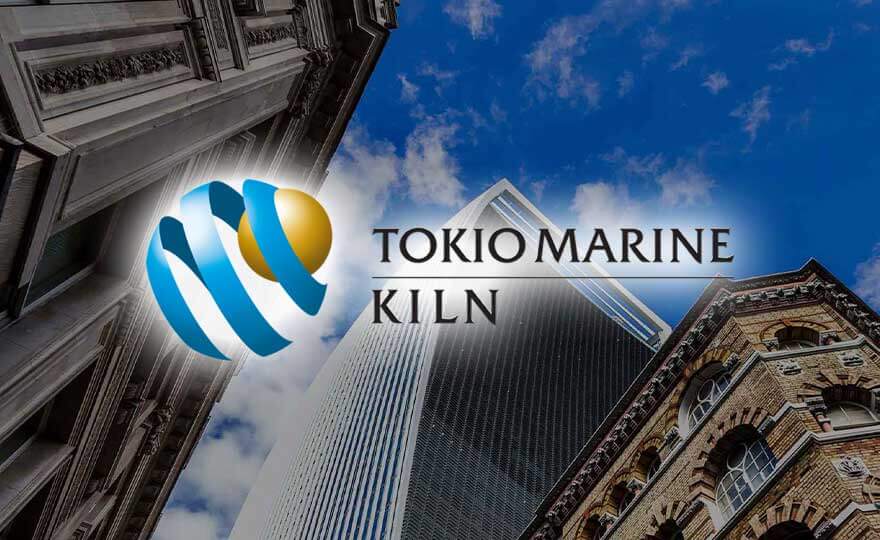 Tokio Marine Kiln (TMK) is eyeing growth in specialty lines heading into APAC 1.1 renewals as clients in the region face escalating geopolitical risk and disruptions to global trade, according to its APAC chief.
Tokio Marine Kiln (TMK) is eyeing growth in specialty lines heading into APAC 1.1 renewals as clients in the region face escalating geopolitical risk and disruptions to global trade, according to its APAC chief.
In an interview with InsuranceAsia News, Pavlos Spyropoulos, regional manager for APAC at TMK in Singapore, said that the specialist Lloyd’s insurer still sees amble opportunities for expansion in the region, particularly in selected lines, such as cyber, credit, marine and political risk, despite the ongoing market softening.
“There is a lot going on,” said Spyropoulos. “It’s different by each line of business. From an Asia perspective, the growth is still there. It’s a very exciting region for the growth of P&C insurance market, and increasingly the specialist market, which has become more sophisticated. We see a lot of interest in terms of investment and a lot of brokers setting up or looking to make investments in the region.”
TMK has had a presence in Singapore for over 20 years and writes across a variety of specialty lines, including cyber, fine art, political risk, property, aviation, credit, marine, political violence and terrorism (PVT), energy and accident and health.
While this year has been a benign one in terms of natural catastrophe losses in APAC, clients have faced severe disruption as a result of geopolitical tensions between the United States and its trading partners in the region, which has disrupted global trade flows and impacted the marine market, and the recent wave of protests in countries such as Nepal and Bangladesh, which is driving demand for political risk products, according to Spyropoulos.
“There is a lot more volatility in the market geopolitically, which is not going away,” said Spyropoulos. “That is only accelerating around us. That is an important opportunity for the insurance market. We are able to provide solutions that help businesses to continue despite increasing challenges.”
Cyber attacks on companies in the region are also becoming more frequent and sophisticated, aided by the rollout of AI technologies, which is driving awareness of the need for cyber coverage.
“We have been going through a growth story over the last three years. ” Pavlos Spyropoulos, TMK

“Where we have focused on new opportunities at the moment is cyber, and we entered the market here around eighteen months ago,” added Spyropoulos. “We are seeing a good opportunity to grow in that space.”
The insurer has recently invested heavily in its local claims team in the region, and has bolstered its local underwriting capabilities in the region as it seeks to diversify away from property.
“From TMK’s perspective, our focus has been around bringing in the best experts we can into our business and we have invested quite significantly in the past three years to either grow in existing lines or start some new lines of business,” added Spyropoulos. “We have continued building out our claims team.
“To lead the market, you need great underwriters and distribution, but you also need really good claims. That will be a continued theme as we move into the current cycle as clearly the market is softening, and we are moving into a cycle that is much more competitive, and rate driven. As that continues, you have to be able to demonstrate great claims ability to differentiate from the competition.”
TMK sees a significant runway for growth in the cyber, PVT, aviation and marine markets in APAC, even as renewal rates undergo a period of softening, according to Spyropoulos.
“We have been going through a growth story over the last three years,” said Spyropoulos. “TMK always had a very strong property team. We have been trying to diversify our portfolio by growing into new markets such as the Middle East and more broadly across Asia. We also have a very strong general aviation book and are leaders in that space in APAC.”
TMK has recently expanded into marine hull underwriting by becoming the APAC capacity provider to MGA Rokstone Underwriting’s marine business.
The MGA’s APAC marine team is led by marine market veteran Rama Chandran, who has been building out a local team of marine underwriters since October.
“Marine has always been a very competitive line of business, but it is still a growth area, particularly in the cargo space,” said Spyropoulos. “Asia is continuing to grow in terms of trade flows. Globally, a lot of trade flows happen within Asia. There is a lot of volatility in the market and that will continue. “
“Long term, we see a continued macro trend, and it is an area where we have invested a lot. Recently we entered the hull space too via a cover holder in Singapore called Rokstone, who have brought on a very senior hull underwriter who has recruited a team. That will give us the opportunity to access a new source of business for us in the hull space going into next year.”
This year, on January 1, TMK merged its two flagship Lloyd’s syndicates into a single entity known as syndicate 510, with stamp capacity of GBP2.25 billion.

Reinsurers in Asia Pacific face intense competition for business at the forthcoming 1.1 renewals amid rate softening and an influx of capacity across many lines of business, including property catastrophe, according to William Ho, CEO of MS Amlin APAC in Singapore.
Ho said that 2025 had seen “an introduction of more capacity in the region” following the last hard market cycle in 2023-24, which has intensified competition for business between reinsurers.
“That has not decelerated or disappeared,” said Ho. “The extra capacity is hanging around and there is more intense competition for business in the region.
“We expect to see that continuing going into the 2026 renewal. We expect strong competition, and differentiation is needed from the different reinsurers, both new capacity that coming into the region and the more established capacity that has stayed around.”
Reinsurers must be disciplined in the face of the market softening and downward pressure on rates added, and leverage their long-term commitments to clients, according to Ho.

“Cedents need to look beyond opportunistic capacity and focus on partners with long-term commitment to the market.”
William Ho, MS Amlin
“Our priorities will be to protect our positions on our core account and core cedents, but also to emphasise to them to not just look at the security but to really look at their reinsurance panel and the longevity of that capacity going into this part of the market cycle,” said Ho.
“Cedents need to look beyond opportunistic capacity and focus on partners with long-term commitment to the market.
“Competition will lead to pressures [on rates]. In terms of T&Cs softening, most reinsurers will be resistant to that. We have attachment points to certain coverage the way they are through a lot of negotiation over the last few years.
“It would not be so prudent to give that up so easily. I also don’t believe that is a priority in terms of what cedents are trying to achieve in their renewal priorities.”
This year has been a relatively benign one for natural catastrophe losses, despite a handful of severe loss events for the industry, including the Myanmar-Thailand earthquake in March, Tropical Cyclone Alfred in Australia the same month, and Typhoon Ragasa, which swept through the Philippines, Taiwan, Hong Kong and Southern China, and Vietnam in September.
“In terms of our portfolio, we still see that there is a margin above technical adequacy to hit our requirements and that buffer keeps the business attractive in our view to continue going forward,” said Ho.
“There have been a couple of events that have been quite meaningful to the market. The Myanmar-Thailand quake will be one of the largest insured earthquake events seen in the last decade and that has impacted the Thai market in a very material way.”
The region Gen Z protests across the region in countries such as Nepal, Bangladesh and the Philippines, have impacted the political violence and terrorism, and political risk markets.
“The riots further reinforce the need for discipline among reinsurers in terms of what coverage they’re given and the terms they’re offering out is what they have truly priced for and are meant to be supplying,” added Ho.
“There will be I believe some resistance from ourselves and the rest of the market to ensure that with market conditions where they are right now with the pressure rising, that we are offering protection for what we are pricing for, and recognising in that reinsurance coverage.
“We need to ensure that there aren’t surprises or perils which are being covered that are not rated for.”

Mapfre Re is targeting “sustainable growth” in Asia at the upcoming 1.1 renewals as the Spanish reinsurer progresses towards its target of EUR1 billion (US$1.15 billion) of gross written premium (GWP) in the region, according to its Asia chief.
In an interview with InsuranceAsia News, Javier Sánchez Cea, chief regional officer for APAC at Mapfre Re, said that Asia offers a compelling growth opportunity for reinsurers, despite the ongoing market softening and increasing risks from climate change.
“We are in the early stage of the renewals,” said Sánchez Cea. “So far, we are seeing discipline in pricing, and nothing to be worried about. Attachment points are stable.”
According to Sánchez Cea, following the last hard market cycle and an influx of capacity, the reinsurance market is currently shifting towards becoming a “buyers’ market,” particularly following a “relatively benign” year for natural catastrophes in 2025.
“What we are expecting is to be flat or low single digit, especially for catastrophe programmes,” said Sánchez Cea. “We do not see a dramatic softening of the market so far. There is a lot of capacity so far, including alternative capital sources, but we are also including the retrocession markets, which we will enjoy as a buyer.
“There is nothing dramatic but there is for sure competitive pressures,” added Sánchez Cea. “An increase in competition is driving reinsurers to relax some standards but most of the players are disciplined to protect their margins that we had in the last year.”
Mapfre Re has placed Asia at the core of its growth plans. The Spanish reinsurer opened an office in Beijing last year and has a target to grow its Asia book to over EUR1 billion euros of GWP annually, up from around EUR700 million currently, excluding Australia.
At this stage in the cycle, Asia offers a compelling growth opportunity for reinsurers, although the region faces significant challenges due to the impact of climate change on catastrophe exposures in a region that is already highly prone to natural disasters, including earthquakes, typhoons, and tsunamis.
“We want to reach that figure in Asia as soon as possible. That will mainly be driven by the market conditions. We want to be more relevant in the region.” Javier Sánchez Cea, Mapfre Re

“We are enjoying good results as an industry, but we have to be aware that we are in a very volatile region,” said Sánchez Cea. “There are opportunities. Asia is the fastest growing region in the world with a lot of emerging markets.
“We see opportunities in China and India, our main growth markets, and Japan and southeast Asia,” added Sánchez Cea. “We want to grow in life and capital driven structured solutions, and P&C.”
In a softening marketplace and intense competition for business at the upcoming 1.1 renewals, forging long term partnerships and providing differentiation are vital for reinsurers seeking to grow, according to Sánchez Cea.
“It will be an interesting renewal where everyone is aiming to grow,” said Sánchez Cea. “Clients will look at the long-term relationships and to the players that will stay with them when the losses come. At Mapfre Re, we want to be consistent and as reliable as possible.”
Against this backdrop, Mapfre Re expects to achieve “sustainable growth” in Asia heading into 2026, according to Sánchez Cea. In the first half of 2025, APAC made up 12.76% of Mapfre Re’s EUR2.38 billion of non-group written GWP.
“We have our target of EUR1 billion, and that is still in our mindset,” said Sánchez Cea. “We want to reach that figure in Asia as soon as possible. That will mainly be driven by the market conditions.”
“We want to be more relevant in the region,” added Sánchez Cea.
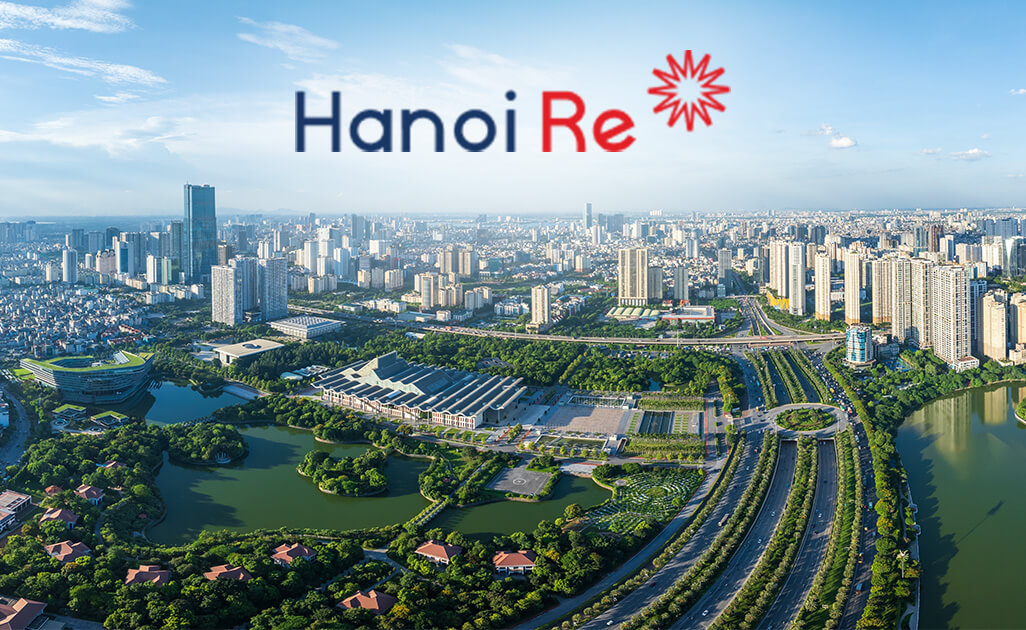 Vietnamese insurer Hanoi Re is in active discussions with prospective strategic foreign shareholders as it is seeking a partner to grow its business, said Francois Duong Thanh Danh, standing vice chairman of PVI Holdings and vice chairman of Hanoi Re.
Vietnamese insurer Hanoi Re is in active discussions with prospective strategic foreign shareholders as it is seeking a partner to grow its business, said Francois Duong Thanh Danh, standing vice chairman of PVI Holdings and vice chairman of Hanoi Re.
“Our priority is a partner that brings service capabilities and a steady flow of business to Hanoi Re—not just capital. The objective is to accelerate revenue growth, deepen our technical offering and open new distribution gateways,” he said.
“Combined with the strengths and international credibility of HDI Global, this strategy supports our ambition to achieve an A financial strength rating and to broaden our global underwriting footprint, while staying aligned with Vietnam’s RBC regime.”
PVI Holdings, which is owned almost 55% by HDI Global and affiliated party, currently holds an 81.09% stake in Hanoi Re and is open to divesting up to 30% of its shares, InsuranceAsia News reported earlier.
The reinsurer has also charted out a plan to support its growth strategies.
“In terms of geography, we are building on our strong foundation in Southeast Asia, Laos, Cambodia, Myanmar, Malaysia and Singapore, where we have longstanding client relationships, deep market understanding and proven claims experience,” said Anh Tuan Trinh, CEO, Hanoi Re.
“From this base, we have expanded across Asia with a growing presence in South Korea, China, India, Nepal, Bangladesh, Sri Lanka and Mongolia. In parallel, we have extended our footprint into the Middle East and Africa, with active business in the UAE, Kuwait, Qatar, Bahrain; Ghana, Egypt, Kenya, South Africa, Algeria and Angola,” he said.
“Above all, we are known for keeping our promises and paying valid claims quickly - a core differentiator that earns trust in competitive markets.” Anh Tuan Trinh, Hanoi Re

Meanwhile, regarding lines of business, Hanoi Re will strengthen its core nonlife treaty portfolio, especially property, engineering and marine, while developing specialty and liability.
“In tandem, we will broaden facultative to enhance underwriting quality and optimize our overall risk portfolio,” Trinh said.
Hanoi Re is also investing in digital transformation and data analytics to sharpen pricing, enhance service efficiency and reduce friction for clients.
“Above all, we are known for keeping our promises and paying valid claims quickly—a core differentiator that earns trust in competitive markets,” Trinh said.
“We expect an orderly renewal season. For property, particularly catastrophe exposed business, there is measured softening for well performing, lossfree programs as competition increases, consistent with market signals from Monte Carlo,” Trinh said, adding that up to 10–15% risk adjusted rate reduction can be expected on clean accounts, while loss affected/peak programs will still see disciplined pricing.
“Capacity for quality portfolios is ample, underpinned by strong reinsurer balance sheets and record ILS/cat bond issuance through 2025.”
On retentions, buyers are seeking relief and there is debate around attachment points and the reintroduction of aggregate/frequency protections, he said.
“In practice, we expect many programs to hold broadly stable on attachments, with structured solutions used to manage earnings volatility.”
Typhoon Yagi in September 2024 was a watershed event, said Trinh.
“Vietnam’s authorities later estimated VND81.5 trillion (US$3.3 billion) in damage and largescale human loss, setting a higher reference point for nat cat risk and reinsurer selectivity.”
In late September–early October 2025, Typhoon Bualoi brought severe flooding across northcentral provinces. Soon after, Typhoon Matmo triggered widespread flooding in northern Vietnam.
Most recently in October, record breaking rainfall has caused major flooding in central Vietnam—including Hue and Hoi An—disrupting transport and tourism and reinforcing market attention on hydrometeorological perils.
“While insured property losses from these recent events are below Yagi’s scale, they are nontrivial and more broadly distributed,” Trinh said.
“Notably, motor claims from flooding have been widespread; we expect this to increase demand for portfolio protections (e.g., motor aggregate/stoploss, quota share) as insurers seek to stabilize earnings through the rainy season.”
Hanoi Re’s role is to combine disciplined underwriting with local insight to help cedents structure resilient programs, securing stable capacity and sustainable pricing, he said.
Hanoi Re sees a wide range of opportunities in Vietnam and the wider APAC region, said Trinh.
Specifically, infrastructure and industrial growth in energy, transport, manufacturing and logistics sectors is expanding the insurable base for engineering, property and BI.
Meanwhile, climate adaptation is creating demand for parametric and public–private disaster risk financing solutions.
Low insurance penetration, especially among SMEs, can support growth via proportional treaties with stronger pricing discipline and reinsurer support, he added.
Moreover, for midsized, reliable capacity providers, regional diversification across Southeast Asia enables balanced portfolios and co reinsurance participation.
Lastly, Vietnam’s move toward RBC encourages cedents to optimize programs and seek high quality capacity, according to Trinh.
However, this promising landscape is tempered by several significant challenges.
The increasing frequency and severity of secondary perils, such as flooding, convective storms and typhoons, are stressing pricing adequacy and accumulation management. Additionally regulatory change and compliance demand better capital allocation, technical reserving and reporting discipline, he said.
“Data quality and transparency remain uneven in parts of the market, constraining pricing and modelling accuracy,” Trinh added.
“Besides, the intensifying competition as global reinsurers stay selective and profitability-focused makes the speed, discipline and local expertise critical differentiators for Hanoi Re.”
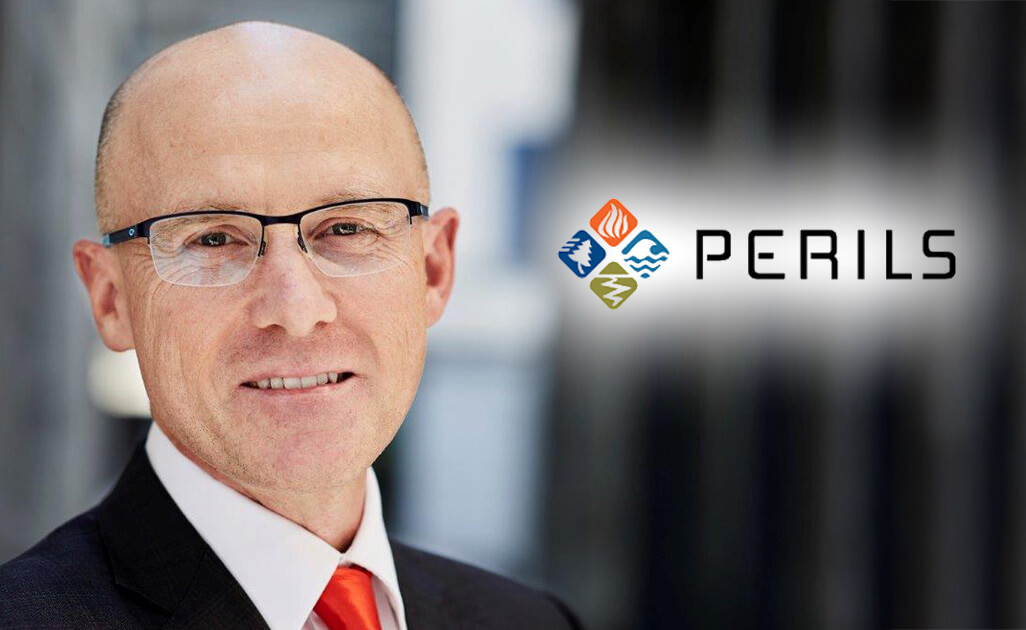 Meanwhile, recent typhoons in the Philippines, Hong Kong and Vietnam, along with Myanmar earthquake, also drive demand for historically peak perils data.
Meanwhile, recent typhoons in the Philippines, Hong Kong and Vietnam, along with Myanmar earthquake, also drive demand for historically peak perils data.
Demand for data on floods and severe convective storms (SCS) has picked up following recent major events, said Darryl Pidcock, head of APAC and cyber for industry loss data specialist Perils.
The China floods, for instance, are estimated to have caused US$10-12 billion in economic losses, while flood-related economic losses in India and Pakistan have exceeded US$1 billion.
“These examples highlight the impact this peril can have in the region from an economic loss perspective whilst insurance penetration remains relatively low,” he said.
Besides, demand for data related to historically peak perils of typhoon and earthquakes also continue to rise, driven by an active typhoon season in, for example, the Philippines, Hong Kong, and Vietnam, alongside the devastating earthquake in Myanmar, according to Pidcock.
“Such events are a reminder of the devastation that earthquakes and typhoons can cause especially in territories with limited availability of insurance industry exposure and loss data and cat models,” he said.
Perils has focused on working with primary carriers in Australia, Japan and New Zealand to produce industry exposure and loss data.
“Our experience shows that the data is of a consistently high standard with strong support from our primary insurance partners,” said Pidcock, adding that Perils’ market penetration in each of these respective markets is more than 80% of the primary carrier market shares.
“In other parts of the region, there is still some way to go to gain similar support from the primary market to share exposure and loss data,” he said.
“In our experience this is often driven by data quality concerns which gradually are improving in many markets.”
“It is critical reinsurers can access different forms of retrocession including ILS/ILWs to help facilitate capacity into the respective markets,” Darryl Pidcock, Perils

To address these concerns, Perils has been developing exposure data for Indonesia, Philippines and Thailand since 2021 with the support from reinsurers, modelling vendors, brokers and associations, according to Pidcock.
“For these markets, we took a slightly different approach to work with industry stakeholders to produce a ‘Consensus Industry Exposure Database’. This provides in effect a best estimate of industry exposures to support model development in these markets,” he said.
“Our goal remains to work with other primary markets in the region albeit we appreciate this may still take time.”
As exposures continue to grow in APAC, Perils believes that ILS will continue to play a role amongst other alternative capital instruments, said Pidcock.
“There has been an increase in the use of ILS in the APAC region in recent years. From Perils’ perspective, ILS is one of several alternative capital tools available to manage natural catastrophe exposure.”
Since 2016, Perils has been actively used as a reporting agent in numerous ILS and industry loss warranty (ILW) transactions which included Japan, Australia and New Zealand perils.
“Industry loss indices are best suited for reinsurers buying retrocession using such instruments as ILS and ILWs. From a basis risk perspective, Perils loss indices are a better fit with reinsurers who will write a portfolio across the market, hence the Perils indices can reduce basis risk.
“It is critical reinsurers can access different forms of retrocession including ILS/ILWs to help facilitate capacity into the respective markets,” Pidcock said.
Having been present in the APAC region for nearly 10 years, Perils currently covers the whole APAC region using a combination of its core and extended reporting services.
The core service uses a ‘ground up methodology’ relying on insurance partners for exposure and loss data, recently covering Japan, Australia, and New Zealand.
Meanwhile, the extended service, which were launched earlier this year, reports cat losses exceeding US$1 billion globally, except the U.S.
“Our expansion plans either by market or peril are driven by the level of insurance industry demand as we fully rely upon market feedback,” he said
“We are regularly asked about China and India and will continue to engage with the industry to assess whether we expand our core service into either of these markets.”
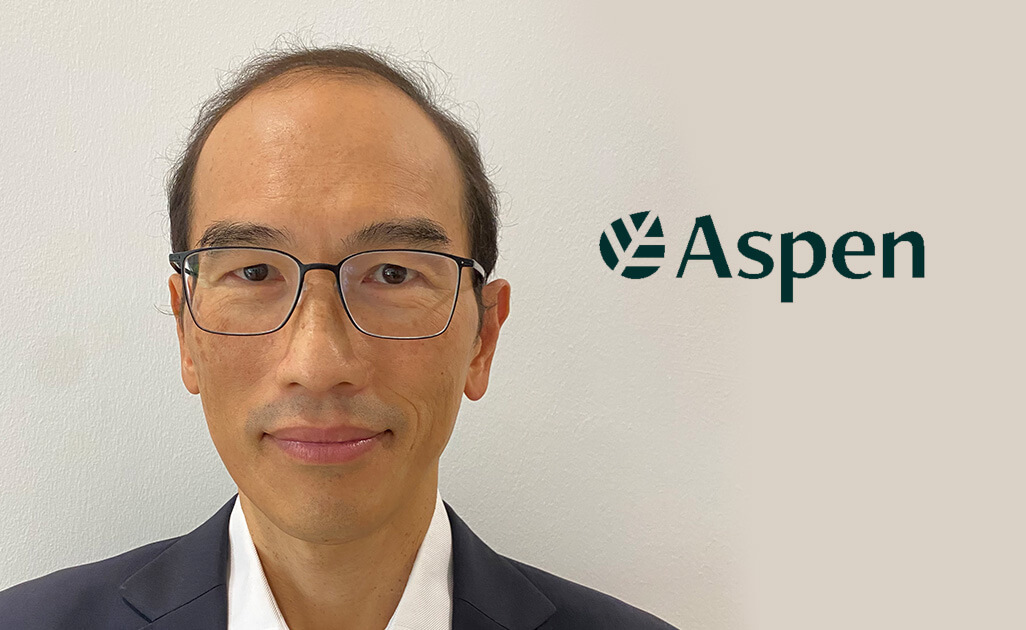 Tay Boon Chuan, head of Singapore at Aspen, speaks to InsuranceAsia News about market conditions in APAC heading into 1.1 and where the firm’s growth strategy in the region.
Tay Boon Chuan, head of Singapore at Aspen, speaks to InsuranceAsia News about market conditions in APAC heading into 1.1 and where the firm’s growth strategy in the region.
As we head into the all-important 1.1 renewal season, the year appears to be shaping up to be another strong one for reinsurers, barring unforeseen events in the final quarter.
While not quite as high as the last two years however, in the context of the past decade where reinsurers were mostly struggling to cover their cost of capital, the year was certainly no laggard.
This strong performance, along with the resulting inflow of reinsurer capacity and appetite for growth, will no doubt be a key talking point during year-end discussions.
In other words, to what extent will prices soften. Particularly, in short-tail classes like property cat, where recent-year performance tends to drive renewal outcome, however questionable the nexus might be.
Because we are loath to reduce the nuance and complexity of our client interaction to a simple number (minus 5% or 10%), it might be salutary to highlight a few things.
Firstly, the year hasn’t been without its share of nat cat activity, and Asia is no exception. The tragic earthquake in Myanmar in March, and the resulting damage to property 1,000km away in Bangkok, is a reminder that few places are truly immune to seismic activity.
And while the current typhoon season thus far hasn’t produced any outsized event, it’s important to distinguish between longer-term trend and seasonal variability. The likely impact of climate change on lives and property hasn’t abated.
All this isn’t mere headline-waving in an attempt to shore up renewal prices.
Rather, it is a recognition of the various structural improvements, forged in many territories during a hardening cycle, and a clarion call that we hold on to as many of these as we reasonably can, for the benefit of cedants and reinsurers alike.
Improvements such as better data capture for more accurate exposure monitoring and control, whether it be risk or cat. In this regard, ongoing attempts by Indonesian reinsurers to control risk accumulation via cession bordereaux should be lauded.
Also, improvements such as greater consistency in the retention/cession practice to obligatory treaties. Here, the shift in recent years in Korea towards fixed – rather than discretionary – QS % cession should be recognised, along with the improved transparency and reduced likelihood for post-event dispute.
Asia is a wide geographical expanse, and the reinsurance buying habits remain as varied as there are local nuances. But sound reinsurance structure, along with clear contractual language, should remain cornerstones, regardless of the size and needs of each cedant or territory.
The renewal prices will eventually find their equilibrium, based on prevailing supply and demand, whatever the cycle.
But retaining hard-fought structural improvements, whether it be sensible risk retention or cover adequacy and suitability, must surely remain longer-term imperatives for the collective benefit of the industry.
We remain excited about the growth opportunities in Asia and are looking to grow our portfolio in a measured way across the key lines of Property, Casualty, Marine and Agriculture.
Our target segment remains XL Treaty. At the current stage of our corporate development, we feel XL affords us the best balance between income growth, capacity use and expected margins.
We continue to engage with the wider market, including cedants who traditionally rely on pro rata capacities for business generation and growth, to seek cost-efficient and holistic solutions.
On property classes, XL purchases tend to be driven by perceived exposure to natural perils and the likelihood of risks aggregation in a major event.
In that sense, Thailand could be an interesting territory this 1/1, with possible changes to reinsurance structure as the market comes to terms with its exposure to earthquake – and not just floods.
Otherwise, the risk landscape in the rest of Asia continues to evolve, whether it be increasing capacity requirements in fast growing segments like renewable energy, or changes to local tariff prompted by regulatory revisions. These developments often lead to changing reinsurance requirements.
At Aspen, we pride ourselves on our structuring and modelling capabilities, including multi-year solutions. We remain committed to work with our insurer and broking partners across Asia as they navigate the evolving risk landscape, whatever the pricing cycle.